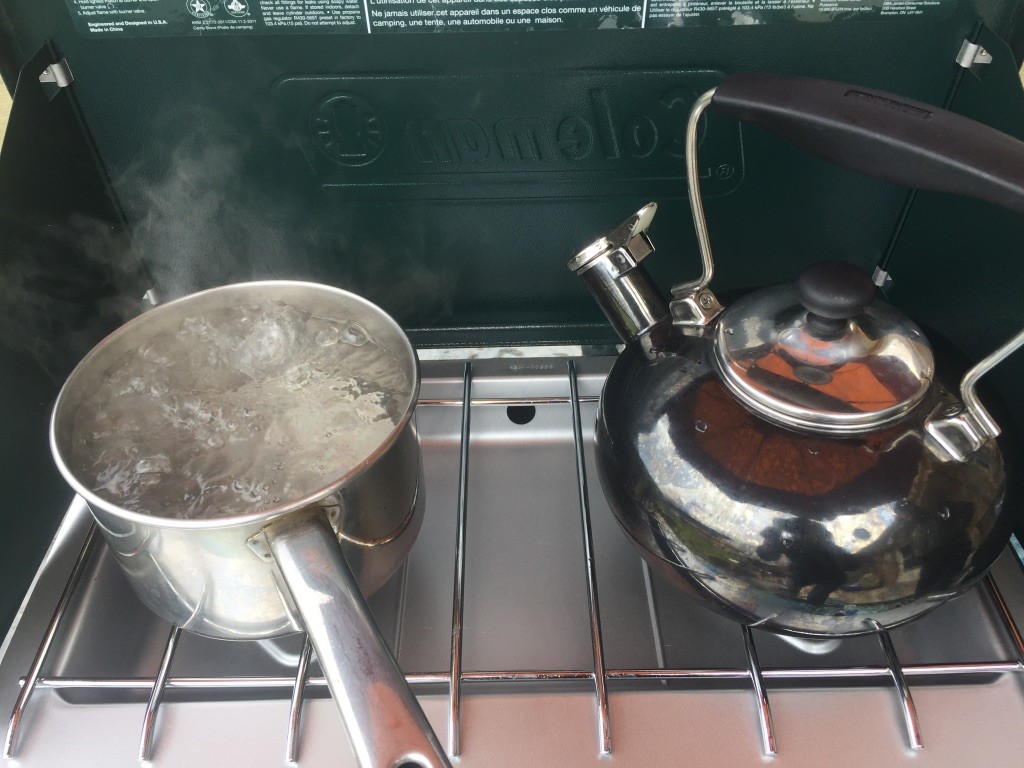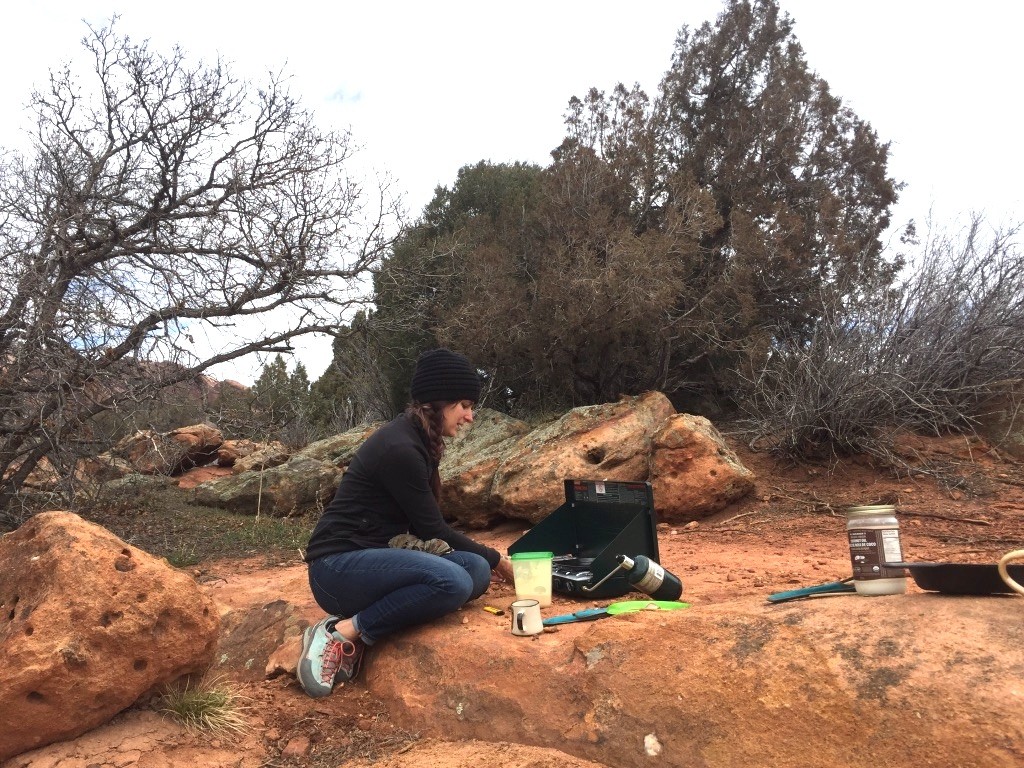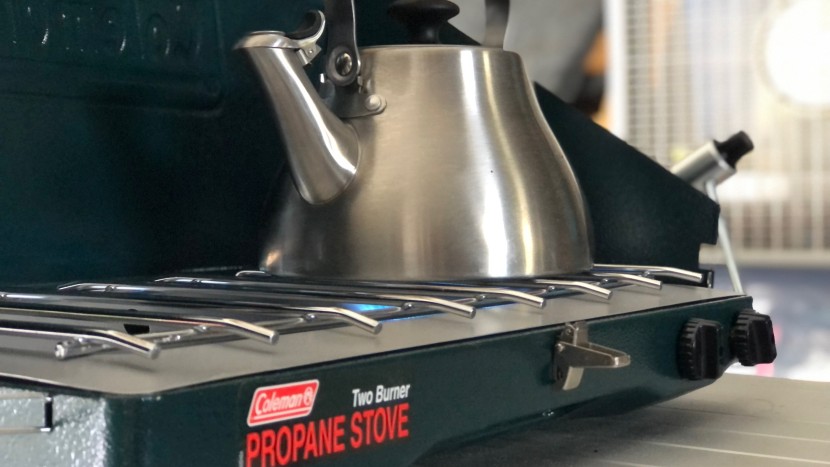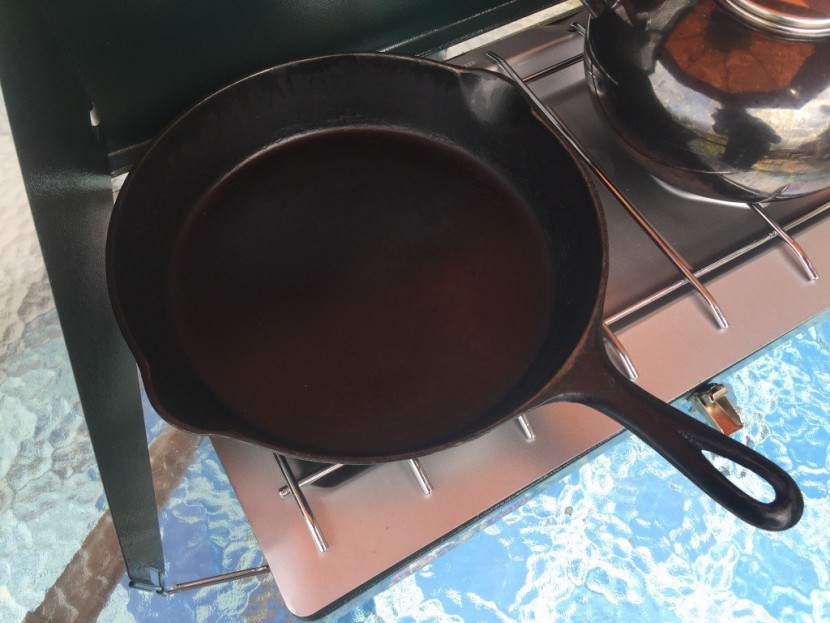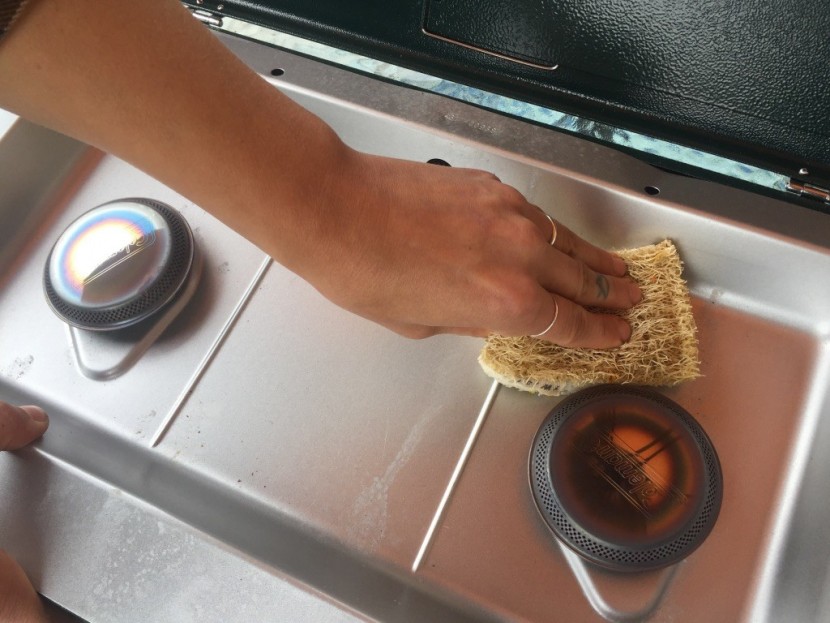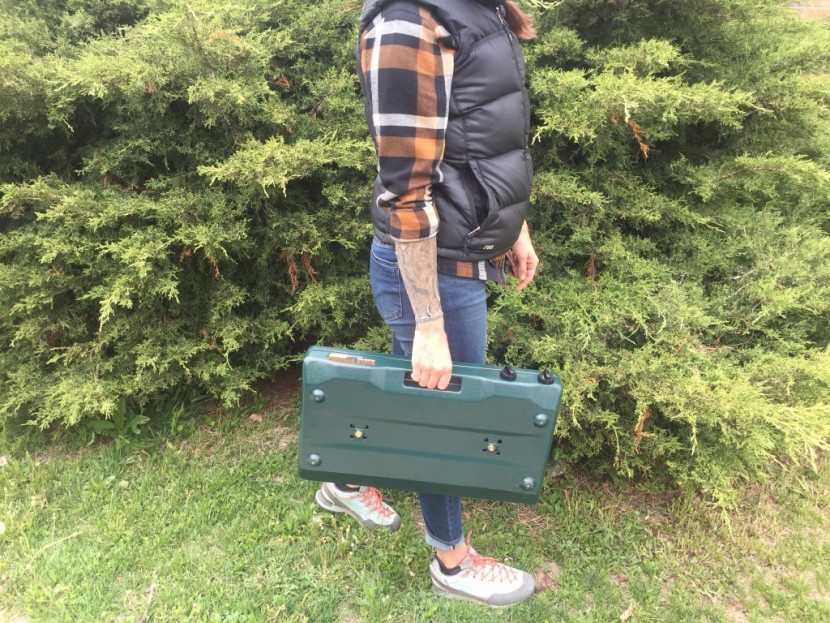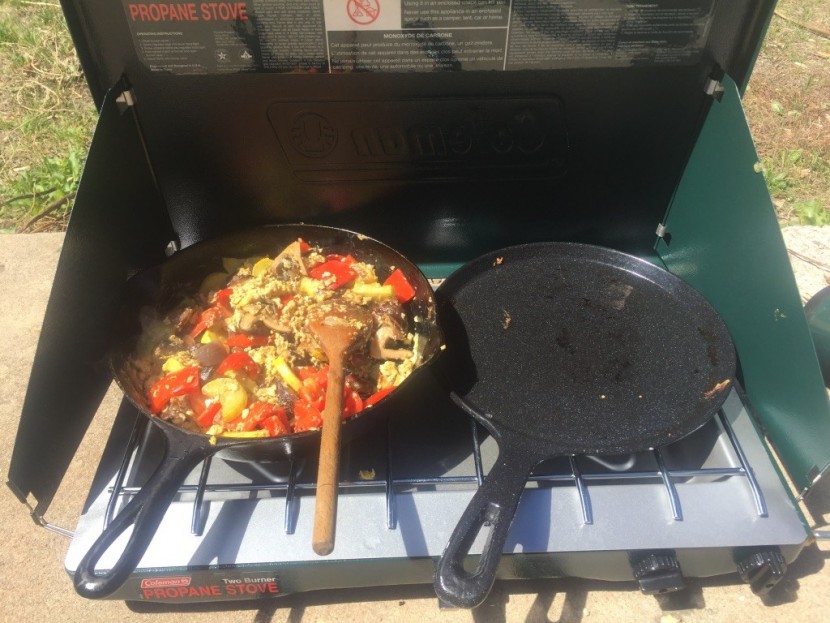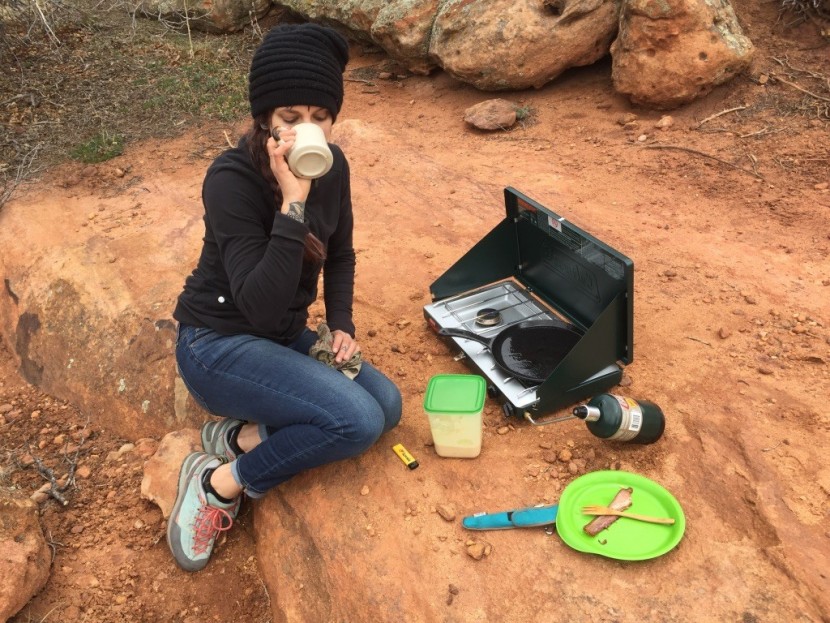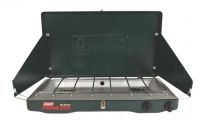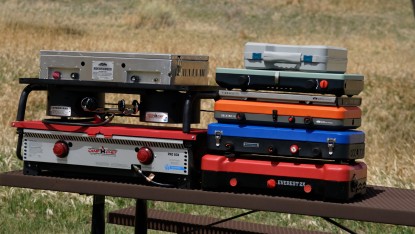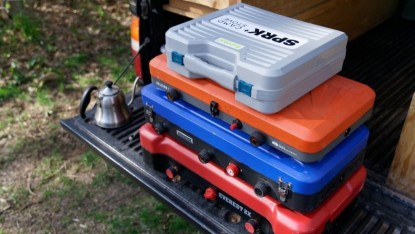
Our Verdict
Our Analysis and Test Results
While the Coleman Classic isn't fancy or feature-rich, it does everything you need a stove to do in a timely and proficient manner. It doesn't have the highest BTUs or boiling times, but it has solid performance in terms of fuel efficiency. For the price, this little gem can satisfy a lot of campers.
Boil Time
The average boil time for the Classic is 5 minutes 30 seconds, which positions it in the upper middle of the pack.
To measure boil times, we head to our windless “lab,” aka our garage, at 5,000 feet (1524 meters) and do two boil tests. For the first test, we boil 1 liter of 58°F water in the presence of 2-4 mph of “wind” (as measured by a pocket anemometer) generated by a box fan. For the second test, we boil 1 liter of water in the absence of wind. For the windy test, the Classic boiled water in 6 minutes 15 seconds, and in the wind-less test, it boiled water in 4 minutes 45 seconds. Part of why it did well in the windy boil test is due to the innovative design of the windscreen. The windscreen on this stove can provide near total protection from a side wind, which effectively protected the burner from our fan-generated breeze. In the field, this allowed it to remain relatively consistent through all manner of weather variations. Despite just 10,000 BTUs per burner, the compact design packs a little punch. If speed is a priority for your boiling needs, however, one option is to pair the Classic with a rapid-boiling backpacking model like the JetBoil MiniMo. Not only will this mean you get your morning coffee faster, but it frees up a burner to make extra pancakes.
Fuel Efficiency
In our fuel efficiency test, the Classic ranked in the middle of the pack when compared to others in our review.
To evaluate fuel efficiency, we start with a new fuel can and weigh it before the windy and wind-less tests and again when these tests are finished. The Classic consumed an average of 5.18% of a green Coleman fuel can or 0.8 ounces of fuel during each test. During the windy test, it consumed 1 ounce of fuel, and in the wind-less test, it used 0.6 ounces of fuel. Out of all our tested stoves, this one ranked in the upper third of the windy fuel test. This stove is likely more fuel efficient owing to the lower output 10,000 BTU burners and the snug windscreens. If conserving fuel (and saving money!) matters more than a quick boil time, this could be an ideal stove for you.
Simmering Ability
The Classic performs well in terms of simmering, although maintaining a low and consistent flame presents a minor challenge, especially on windy days.
When cooking one pancake at a time, this stove is fabulous — two or more revealed a hot spot in the center of the pan, a pretty typical issue for stoves with small burners. While compact stoves such as this one can fit larger pans, they generally aren't able to heat them evenly. And while making scrambled eggs is fine if you babysit them, if you try to walk away, you'll find that even the low setting on the Classic is a bit high. There isn't a graphic on the dial to represent flame settings (low to high), but in our experience, these graphics are rarely very accurate on camp stoves. All in all, this model is decent but not the best.
Ease of Use
Just like the other compact two-burners in our review, the Classic proved straightforward and simple to use.
While the Classic is pretty much the same as many other table top stoves, the fuel adaptor is noticeably easier to attach to the stove body than many of our other tested models. We also like the windscreen setup, which involves slotting bobby pin-shaped connectors into the stove body. This allows the use of slightly larger pans because you can widen the flaps, and it creates a more perfect wind seal when you have it in the narrowest setting.
The top cooking grate is removable to allow full access to the drip tray underneath. There's a hole to nest the fuel adaptor when storing, creating a recess that may collect food bits over time, but nothing major. Wiping down this model after use is fast, and due to its simple design, there isn't much attention necessary beyond keeping it clean.
Portability
Weighing 9.8 pounds with dimensions of 21 x 13 x 3.5 inches, this is a compact stove that can easily fit in all kinds of vehicles.
While we appreciate the low profile of this stove, none of the compact two-burner models are obscene in their weight or packed size. Portability probably won't be a make-or-break issue for most car campers. For obvious reasons, though, the single-burner options are much lighter and more comfortable to carry, and the freestanding stoves are a bear to haul around. The Classic hits a sweet spot right smack in the middle.
Should You Buy the Coleman Classic?
The Classic is cheap at full retail price, and online retailers often have it for even cheaper. While it wasn't the best in any of our tested categories, it holds its own and performs consistently. If your camp cheffing needs are simple, or you are searching for a car camping stove that won't break the bank, this is a good model to explore.
What Other Camping Stoves Should You Consider?
For the same price, you would be hard-pressed to find a better stove than the Classic, but for a little more money, the Coleman Cascade Classic simmers better and is more fuel efficient. The Cascade is the upgraded version of this stove, and may replace it completely at some point. If money is less of an object, we recommend checking out the Kovea Twin Slim. It performed admirably across all metrics and is one of the most portable stoves in our review. If you aren't convinced that you need to splurge, we recommend checking out the Gas One GS-3000. It ranks lower in terms of boil time and fuel efficiency, but this single-burner butane stove gets it done for a fraction of the price.
| Awards | |
|---|---|
| Price | $75 List |
Overall Score  |
|
| Star Rating | |
| Bottom Line | This is a simple and straightforward two-burner that provides everything you need for basic meals at a very nice price |
| Pros | Affordable, fuel adaptor threads on easier than other stoves, windscreens are adjustable, compact dimensions |
| Cons | No auto-ignition, lower BTUs, small burners prone to hot spots |
| Rating Categories | Coleman Classic |
| Boil Time (25%) | |
| Fuel Efficiency (25%) | |
| Simmering Ability (20%) | |
| Ease of Use (15%) | |
| Portability (15%) | |
| Specifications | Coleman Classic |
| Weight | 9.8 lbs |
| BTU per Burner (from manufacturer) | 10,.000 |
| Average Boil Time (1 liter of water, wind & no wind) | 5 min 30 sec |
| Boil Time (1 liter of water, wind from a box fan) | 6 min 25 sec |
| Boil Time (1 liter of water, no wind) | 4 min 45 sec |
| Cooktop Material | Aluminized steel |
| Packed Size | 21" x 13" x 3.5" |
| Cooking Surface Dimensions | 18.75" x 10.5" |
| Burner/Flame Diameter | 3.5" |
| Distance Between Burners (center to center) | 7.75" |
| Windscreen? | Yes |
| Piezo Ignitor? | No |
| Number of Burners | 2 |
| Type of Model | Tabletop |
| Fuel Type | Propane |
| Model Number | 2000020943NP |


